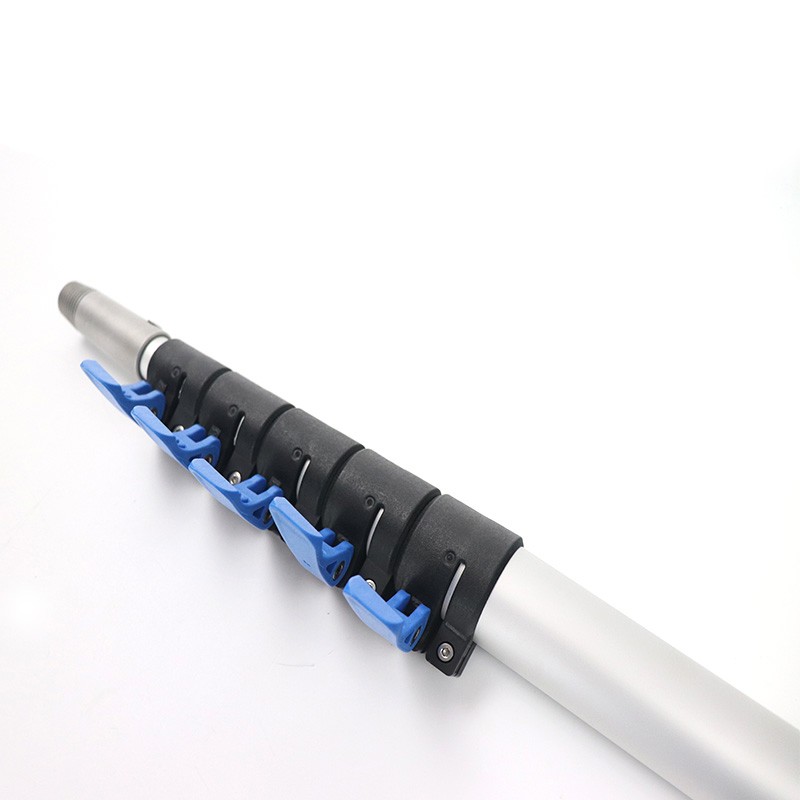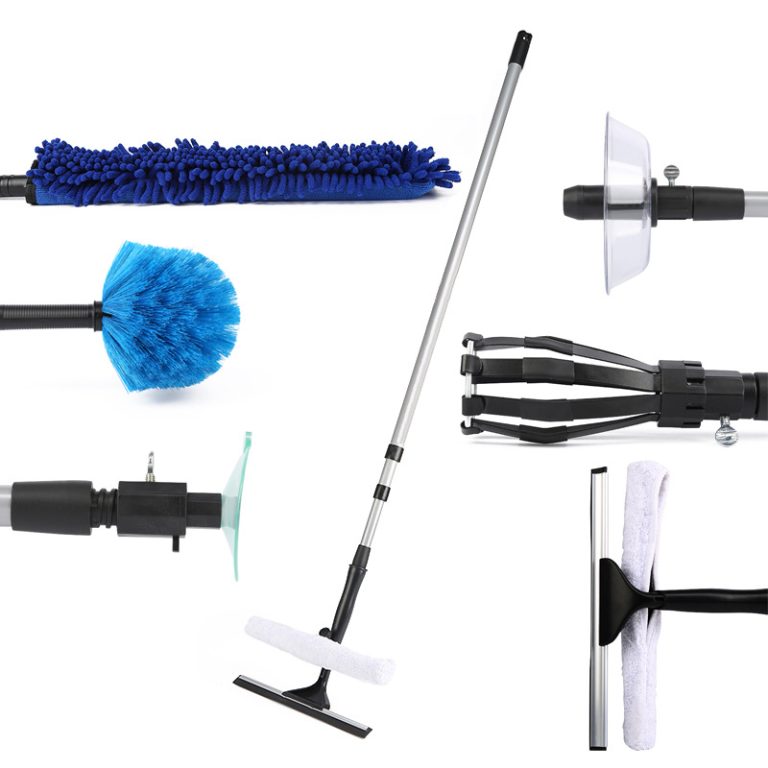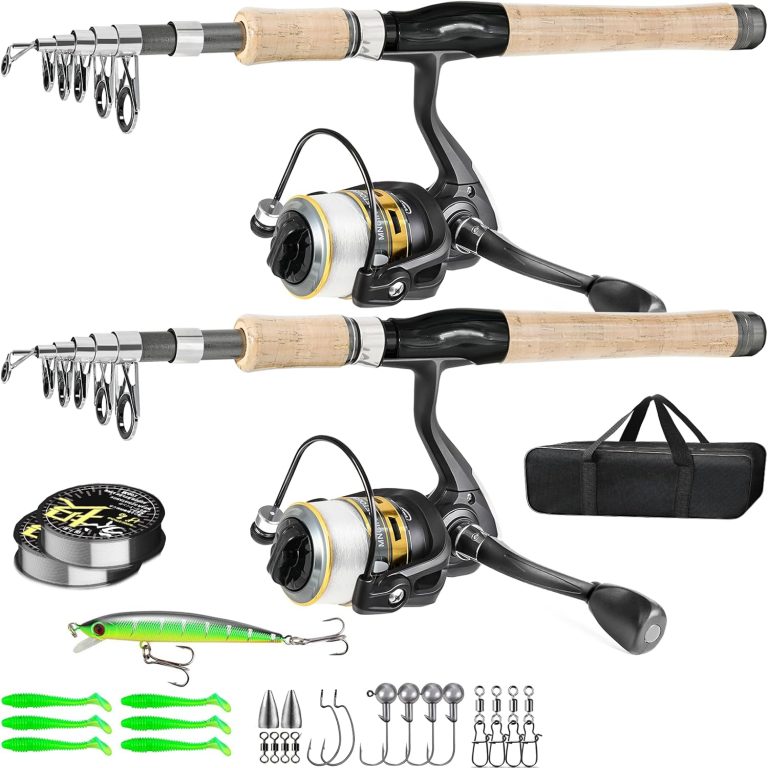Telescopic Pole Technology: Advancements and Improvements
Telescopic poles have come a long way from their basic origins. Once simple tools used primarily for reaching high places, they have now evolved into sophisticated devices thanks to continuous technological advancements. These improvements have enhanced their functionality, durability, and user – friendliness, making them indispensable in various fields.
Material Innovations
One of the most significant areas of advancement in telescopic pole technology is the development of new materials. Traditional telescopic poles were often made of heavy metals, which could be cumbersome to use, especially when extended to their maximum length. However, modern manufacturing techniques have led to the widespread use of lightweight yet robust materials.
Carbon fiber, for instance, has revolutionized the telescopic pole industry. Known for its exceptional strength – to – weight ratio, carbon fiber poles are significantly lighter than their metal counterparts. This makes them ideal for applications where portability is crucial, such as photography, videography, and hiking. A carbon – fiber telescopic pole can be easily carried in a backpack and extended to reach elevated vantage points without adding excessive weight to the load. Additionally, carbon fiber is highly resistant to corrosion, ensuring a longer lifespan, even in harsh environmental conditions.
Another material that has gained popularity is high – strength composite plastics. These plastics are engineered to be tough and durable, capable of withstanding substantial stress. They offer a more affordable alternative to carbon fiber while still providing good performance. Composite plastic telescopic poles are often used in consumer – grade products for tasks like household cleaning, where the cost – effectiveness and lightweight nature are key selling points.
Locking and Extension Mechanisms
The locking and extension mechanisms of telescopic poles have also seen remarkable improvements. In the past, these mechanisms were often prone to jamming, slipping, or providing an insecure hold. Today, manufacturers have developed advanced systems that ensure smooth operation and reliable locking.
One such innovation is the internal locking mechanism. Instead of the traditional external clamps or friction – based locks, internal locking systems are more compact and offer a cleaner appearance. These mechanisms work by using a series of internal latches or pins that engage with corresponding holes or slots in the pole sections. This design not only provides a more secure lock but also reduces the risk of damage to the locking components from external impacts.
Another advancement is the use of quick – release systems. These allow for rapid extension and retraction of the pole, saving time and effort. For example, in professional cleaning or inspection tasks, where time is of the essence, a telescopic pole with a quick – release mechanism can be adjusted to the desired length in a matter of seconds. Some quick – release systems also incorporate safety features, such as an automatic locking function once the pole is extended to prevent accidental collapse.
Enhanced Ergonomics
Ergonomics has become a major focus in telescopic pole design. Manufacturers are now aware of the importance of reducing user fatigue and improving comfort during extended use. This has led to the development of several ergonomic features.
One common improvement is the design of more comfortable grips. Telescopic poles now often come with padded or textured handles that conform to the shape of the hand. These grips provide a secure hold, even in wet or slippery conditions, and help distribute the weight of the pole more evenly, reducing strain on the hand and wrist. Some high – end poles even feature adjustable grips, allowing users to customize the angle and position for maximum comfort.
In addition to the handle, the overall balance of the telescopic pole has been optimized. By carefully engineering the weight distribution along the length of the pole, manufacturers have ensured that it feels more stable and easier to control, especially when fully extended. This is particularly important for tasks that require precise maneuvering, such as painting or using a telescopic camera mount.
Smart Features and Connectivity
The era of smart technology has also made its way into telescopic pole design. Some modern telescopic poles now come with built – in sensors and connectivity options, adding a new level of functionality.
For example, in the field of inspection, telescopic poles can be equipped with sensors that detect temperature, humidity, or the presence of harmful gases. These sensors can provide valuable data to users, allowing them to make informed decisions about the environment they are working in. Additionally, some poles can be connected to smartphones or tablets via Bluetooth or Wi – Fi. This enables users to control the pole’s functions, such as extension and retraction, remotely. They can also view real – time data from the sensors or even take pictures or record videos if the pole is equipped with a camera attachment.
In conclusion, the advancements and improvements in telescopic pole technology have transformed these simple tools into highly versatile and sophisticated devices. From innovative materials and advanced locking mechanisms to enhanced ergonomics and smart features, these developments have broadened the applications of telescopic poles and made them more user – friendly. As technology continues to evolve, we can expect even more exciting improvements in the future, further enhancing the functionality and performance of telescopic poles.



